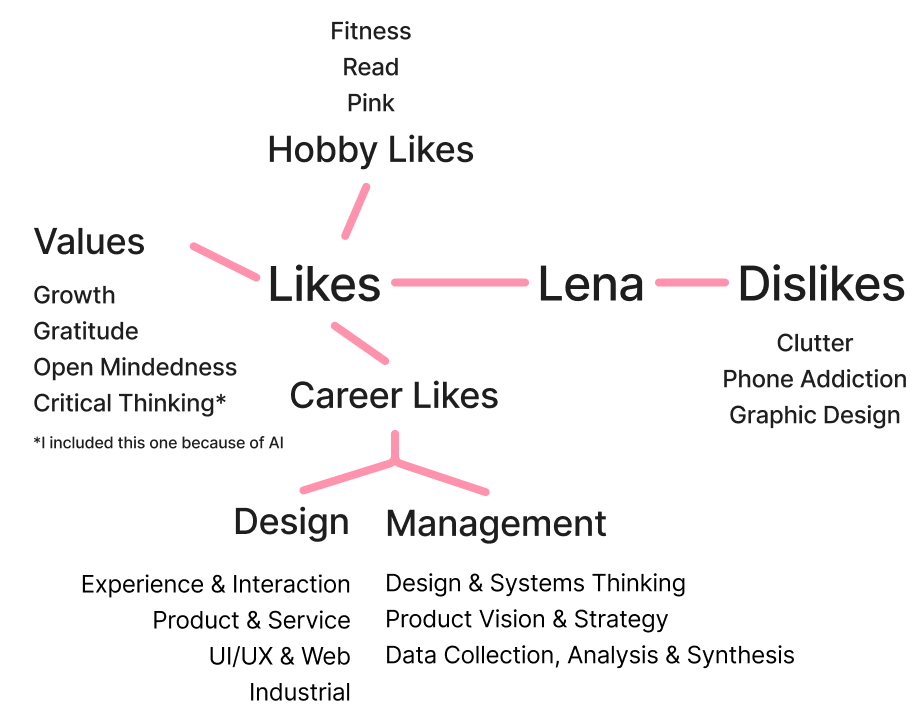
[SHOOKS]
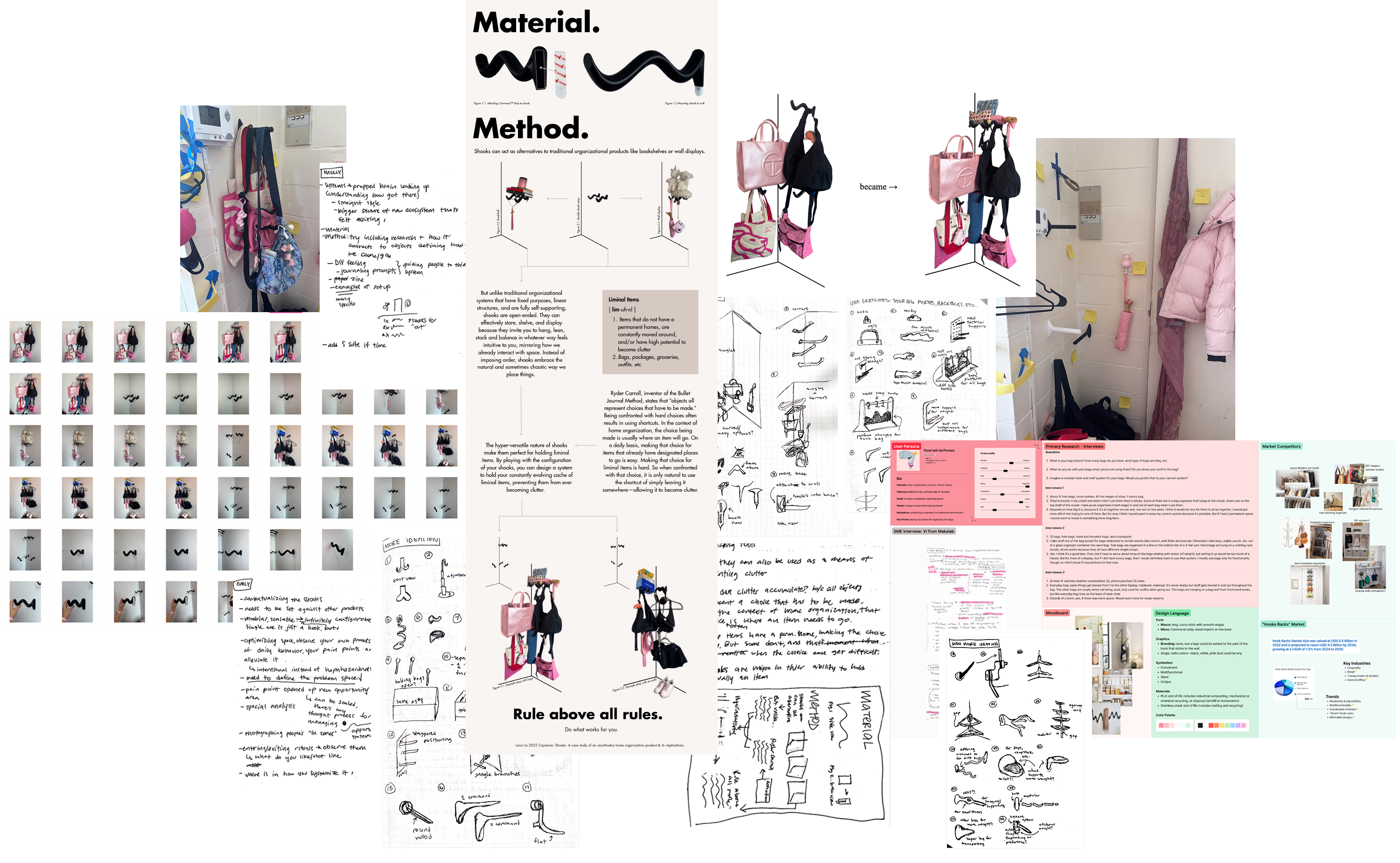
Description
This undergraduate capstone project is a case study of an unorthodox home organization product and its implications. It involves the creation of "shelf-hooks" called shooks, which rely on walls, corners, and other shooks to form an organizational system. Deeply rooted in my passion for systems and home products (yes, I love containers), the project explores nonlinearity and organization psychology through the lens of systems design.
Skills
Industrial Design
Systems Design
Qualitative Research
Market Research
3D Modeling & Printing
Interviewing
Photoshop

[NOTION INC. GROWTH STRATEGY]
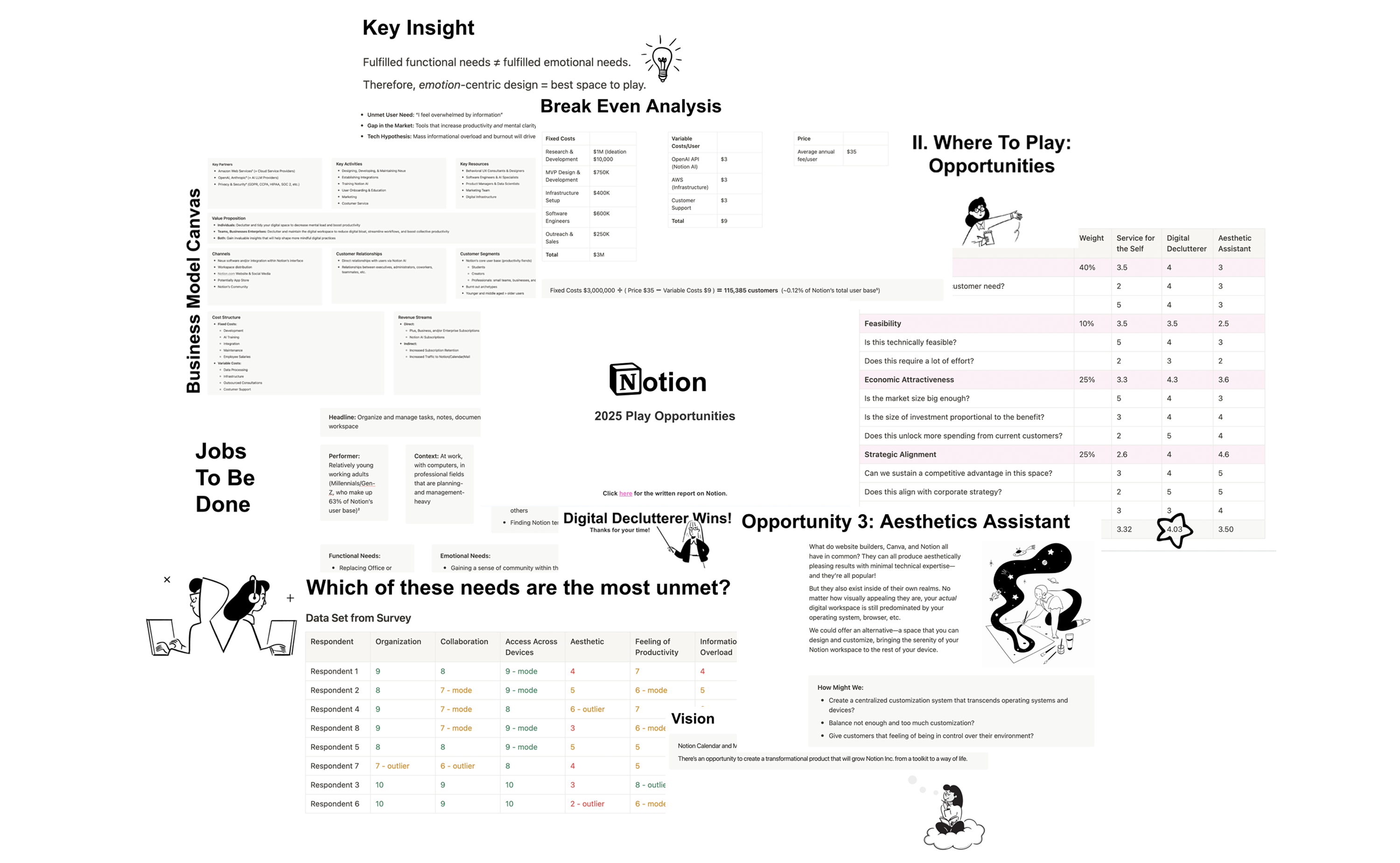
Description
This case study on Notion Inc. (1) explores various growth opportunities and (2) recommends a winning strategy through a design strategy lens. It features frameworks and tools such as Jobs To Be Done, “How Might We” statements, business scorecards, a lovable.ai marketing site prototype, a business model canvas, etc. This case study was ultimately a high level practice in applying creativity and design thinking principles to a non-design field.
Skills
Design Stategy
User Research
Market Research
Data Analysis & Synthesis
Business Model Design
AI Prototyping
Presenting

[THE GREY ZONE]
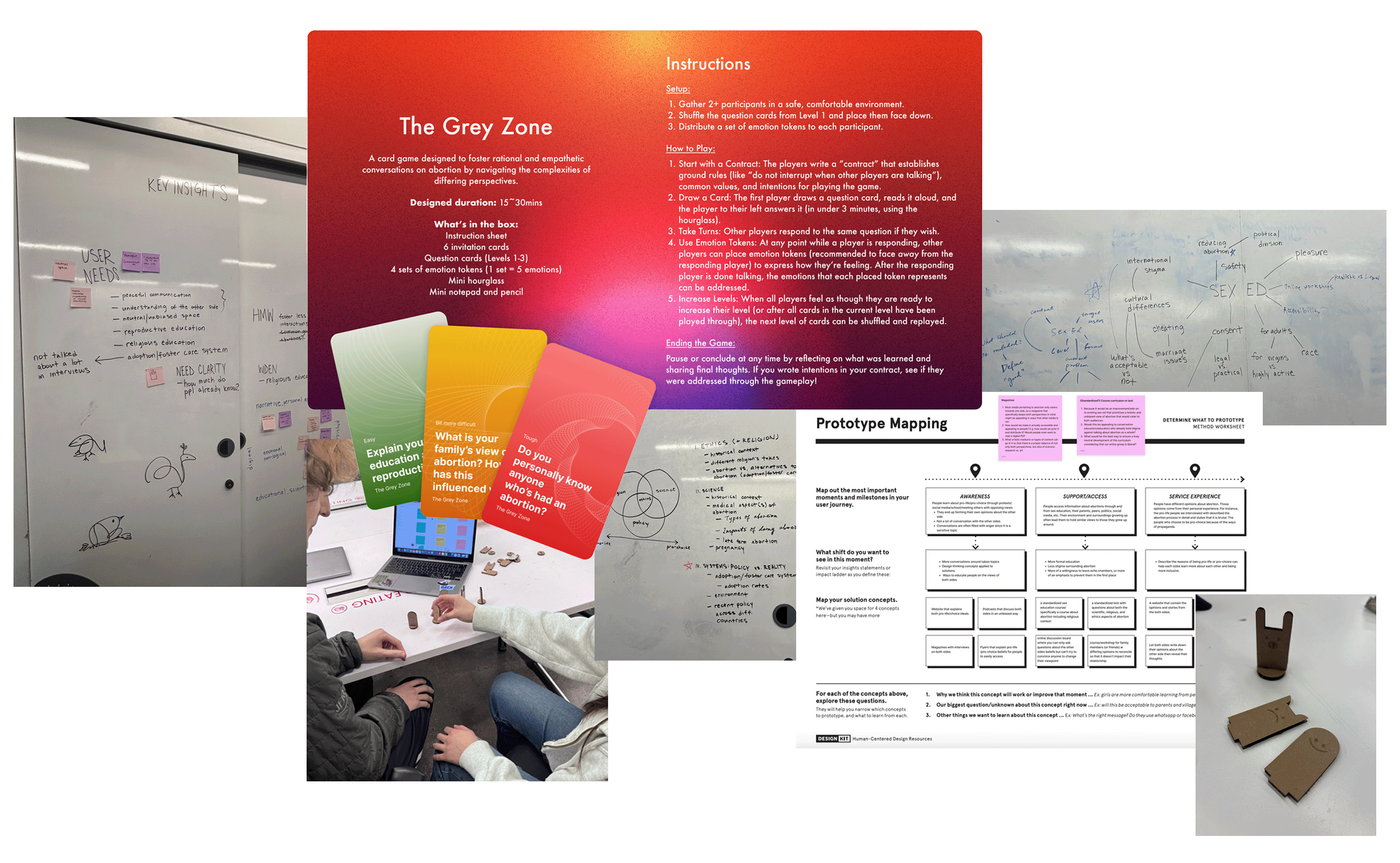
Description
Teammates: Nayan Sarma, Yilin Wang
Problem Statement: "How might we foster less antagonistic interactions between the pro-life and pro-choice movements?"
Goal: Design a service that addresses at least two of the UN’s Sustainable Development Goals.
Key Insight: While people were often open to talking about abortion—especially with their close friends or family—they (1) did not want to start a debate and (2) did not feel as though they were in the right environment to hold a proper conversation.
Solution: A simple card game called “The Grey Zone,” with four main components:
- A physical and/or digital invitation to the game
- A set of notepad and pencil
- Prompt cards with questions about abortion sorted into three levels of difficulty
- Emotion tokens, which are small characters with faces that portray 5 primary emotions
Players take turns to answer prompt cards, and as they respond, other players can place emotion tokens down, and later reflect on their reactions and reasoning.
Impact: By playing “The Grey Zone,” players are offered an easy “excuse” to bring up the topic of abortion with loved ones, collaboratively create a safe environment to discuss, and gain a deeper understanding of opposing perspectives and experiences.
Skills
Service Design
Interviewing
Brainstorming
Data Analysis & Synthesis
Rapid Prototyping
User Testing
Figma
Presenting

[HURIDOCS]
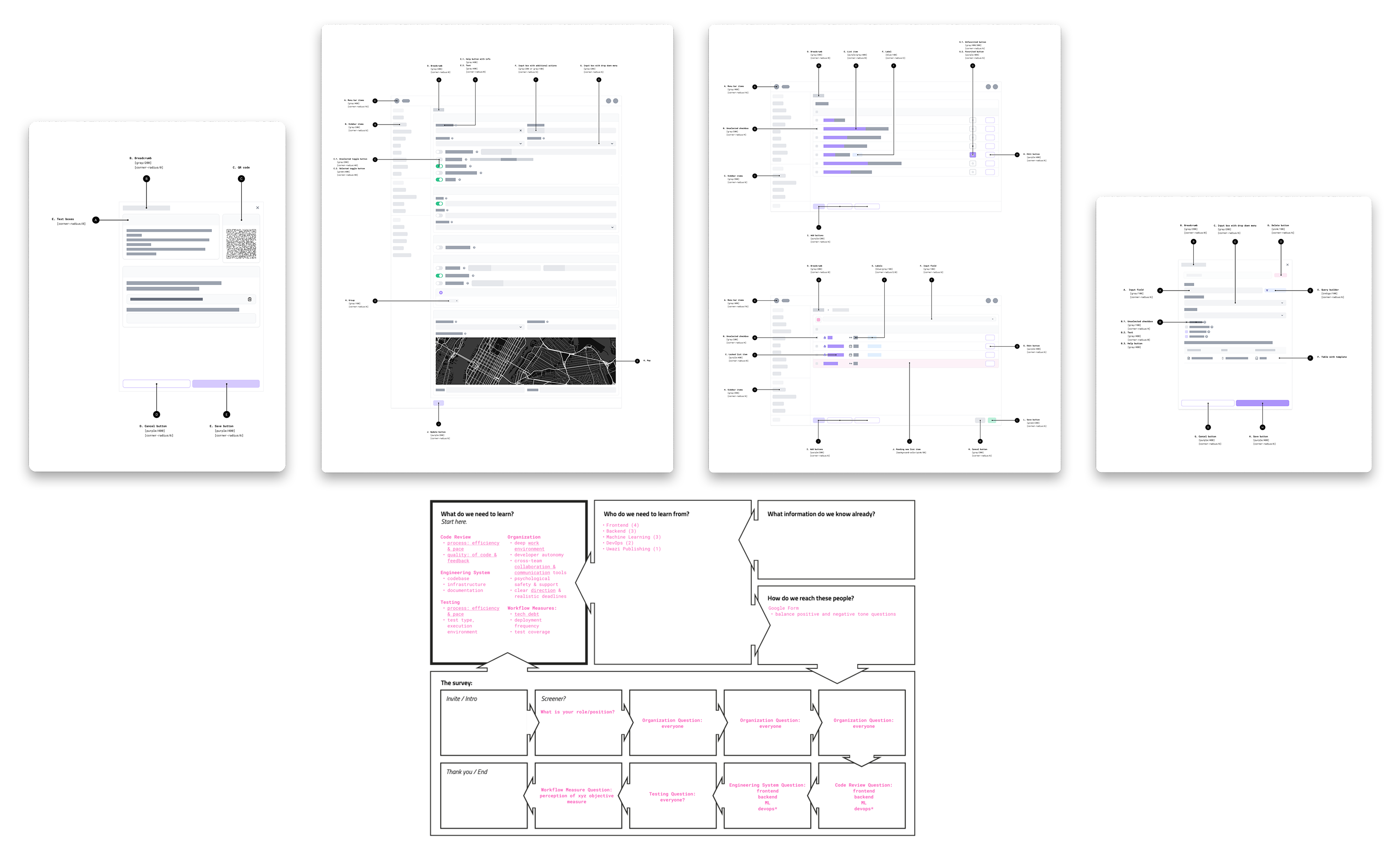
Description
During the summer of 2023, I was sponsored by the NYU Social Impact Changemaker Fellowship to work as a design intern at HURIDOCS, the nonprofit behind Uwazi, a database web application for documenting information on human rights violations.
Projects and Impact:
- An Uwazi "Visual Language to Plain Language" breakdown guide—preventing dissonance between Uwazi's designers/developers and customers who may not be tech-savvy enough to navigate the interface with ease.
- An Uwazi UI system map—comprehensively defining Uwazi's UI assets and software structure, acting as a style guide for internal reference.
- A Developer Experience (DevEx) survey—introducing the first solely developer-focused practice to gauge employee satisfaction, and setting the foundation for long term workplace health check-ins.
Skills
Design Research
Design Documentation
Figma
Visual Design
Product Design
Survey Design
Presenting

[WEST 4TH STREET REVIEW]
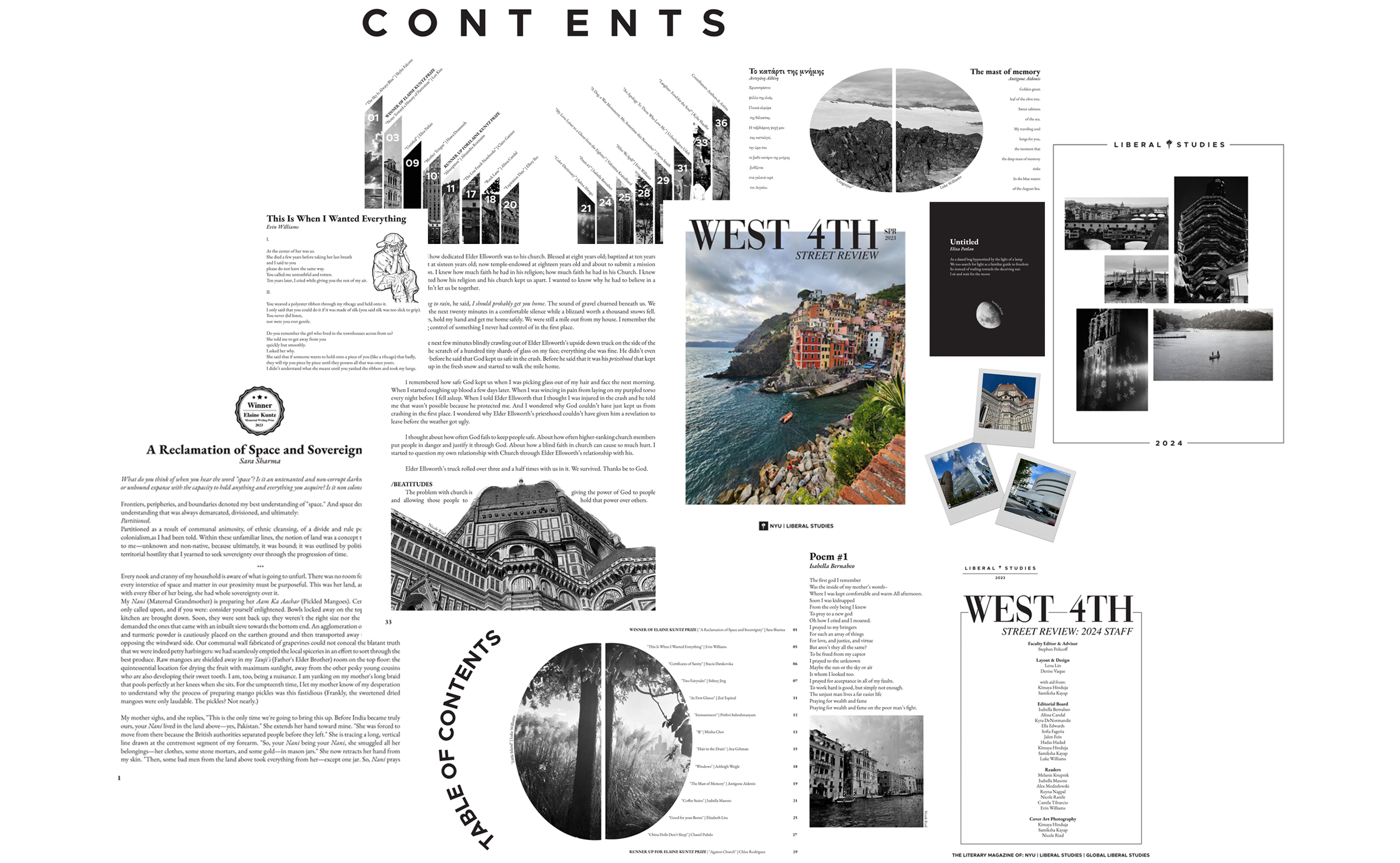
Description
In 2023 and 2024, I was one of two principal designers for the West 4th Street Review, an NYU Global Liberal Studies & Liberal Studies Core literary magazine.
My co-designer, Denise Vaque, and I, brought the magazine from conceptualization to print, which primarily consisted of:
- Editing and compiling the content (writing and photography)
- Designing each spread's layout
- Creating the magazine in Adobe InDesign
Afterwards, I also designed a long term system to systematize the annual designer recruiting process and lower the turnover rate. I onboarded and mentored two additional designers.
Skills
InDesign
Photoshop
Adobe Illustrator
Layout Design
Editing
Mentorship




